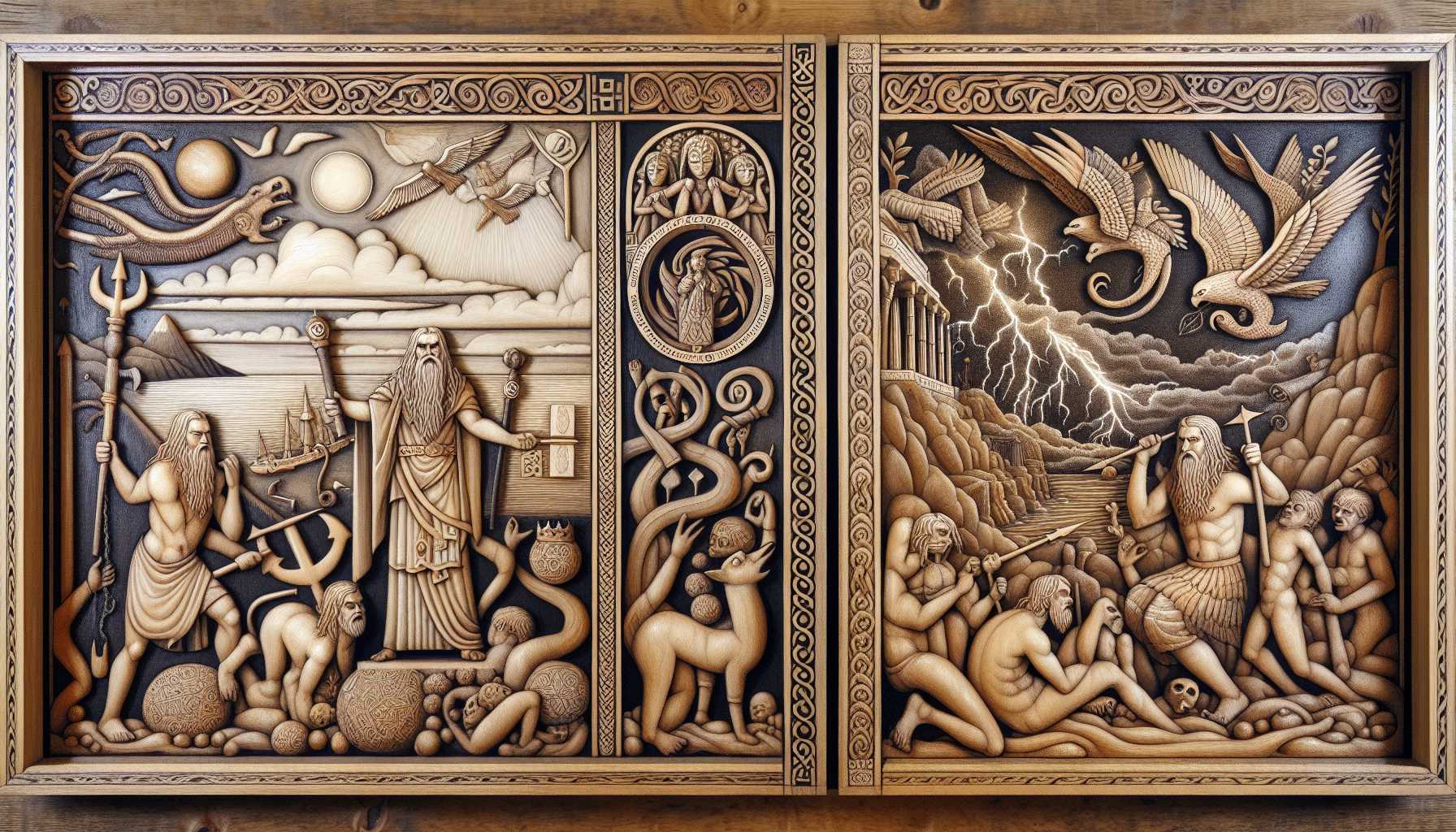
Ancient Norse Myths that Shape Modern Culture
The BBC article explores six ancient Norse myths that continue to resonate in modern culture.
BBC de wénzhāng tàntǎo le liù gè gǔlǎo de běi'ōu shénhuà, zhèxiē shénhuà zài xiàndài wénhuà zhōng yīrán jùyǒu gòngmíng.
BBC的文章探讨了六个古老的北欧神话,这些神话在现代文化中依然具有共鸣。
It highlights the timeless themes present in these myths, such as the struggle between good and evil, the inevitability of fate, and the quest for knowledge and power.
Tā tūchū le zhèxiē shénhuà zhōng cúnzài de yǒnghéng zhǔtí, rú shàn è zhī zhēng, mìngyùn de bùkě bìmiǎn xìng yǐjí zhuīqiú zhīshì hé quánlì de guòchéng.
它突出了这些神话中存在的永恒主题,如善恶之争、命运的不可避免性以及追求知识和权力的过程。
Each myth serves as a reflection of human experience, addressing issues like existential uncertainty and the challenges of life.
Měi gè shénhuà dōu shì rénlèi jīnglì de zhéshe, shèjí cúnzài de bùquèdìng xìng hé shēnghuó zhōng de tiǎozhàn.
每个神话都是人类经历的折射,涉及存在的不确定性和生活中的挑战。
The article delves into specific stories, including the tale of Odin's sacrifice for wisdom and the narrative of Ragnarok, the end of the world, which symbolizes renewal and rebirth.
Zhè piān wénzhāng shēnrù tàntǎo le jùtǐ de gùshì, bāokuò àodīng wèi zhìhuì ér xīshēng de gùshì hé nièhàn zhī qí de xùshù, hòuzhě xiàngzhēng zhe zhòngshēng yǔ zàishēng.
这篇文章深入探讨了具体的故事,包括奥丁为智慧而牺牲的故事和涅槃之骑的叙述,后者象征着重生与再生。
These myths not only influence contemporary literature, film, and art but also encourage people to confront their own fears and aspirations.
Zhèxiē shénhuà bùjǐn yǐngxiǎng dāngdài wénxué, diànyǐng hé yìshù, hái gǔlì rénmen miàn duì zìjǐ de kǒngjù hé bàofù.
这些神话不仅影响当代文学、电影和艺术,还鼓励人们面对自己的恐惧和抱负。
Overall, the enduring nature of these Norse myths showcases their ability to connect with fundamental human emotions and societal questions, making them relevant in today’s world.
Zǒng de lái shuō, zhèxiē běi'ōu shénhuà de chíjiǔ xìngzhì zhǎnshì le tāmen yǔ jīběn rénlèi qínggǎn hé shèhuì wèntí de liánxì, shǐ tāmen zài dāngjīn shìjiè zhōng réngrán xiāngguān.
总的来说,这些北欧神话的持久性质展示了它们与基本人类情感和社会问题的联系,使它们在当今世界中仍然相关。
Based on this article
